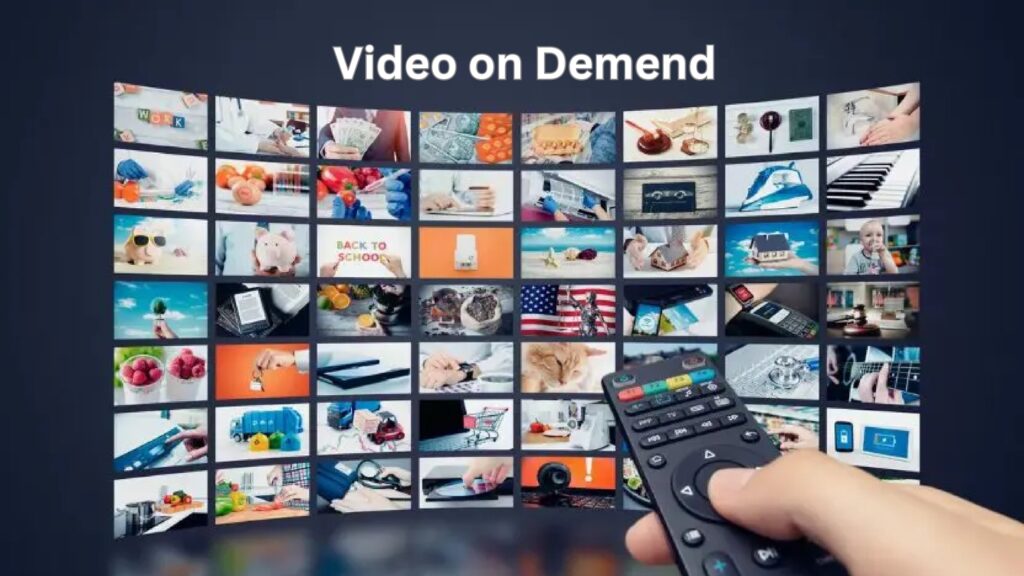The Future of Video on Demand (VOD): Trends, Benefits, and Strategies
The way we consume video content has drastically changed over the past decade. Gone are the days when audiences were tied to TV schedules—today, Video on Demand (VOD) dominates entertainment, education, and marketing.
From Netflix and YouTube to corporate training platforms, VOD offers unparalleled convenience, personalization, and scalability. But what exactly is VOD, and how can businesses and creators leverage it effectively?
In this guide, we’ll explore:
-
What Video on Demand (VOD) is and how it works
-
Key benefits of VOD for businesses and consumers
-
Emerging trends shaping the future of streaming
-
How to create a successful VOD strategy
What Is Video on Demand (VOD)?
Video on Demand (VOD) is a media distribution system that allows users to access video content whenever they want, rather than at a scheduled broadcast time. Unlike traditional TV, VOD platforms let viewers play, pause, rewind, and fast-forward content on their own terms.
Types of VOD Services
-
Subscription Video on Demand (SVOD)
-
Users pay a recurring fee for unlimited access (e.g., Netflix, Disney+).
-
-
Transactional Video on Demand (TVOD)
-
Users pay per piece of content (e.g., Amazon Prime Video rentals).
-
-
Advertising-Based Video on Demand (AVOD)
-
Free content supported by ads (e.g., YouTube, Tubi).
-
-
Hybrid Models
-
Platforms like Hulu combine subscriptions with ads.
-
Why VOD Is Revolutionizing Media Consumption
1. Convenience & Personalization
Viewers no longer need to adjust their schedules for TV shows. With VOD, they can watch what they want, when they want, on any device. AI-driven recommendations (like Netflix’s algorithm) enhance user experience by suggesting relevant content.
2. Global Reach & Scalability
VOD eliminates geographical barriers. A business in Singapore can train employees worldwide via a corporate VOD platform, while an indie filmmaker can distribute movies globally without traditional studio backing.
3. Cost-Effective for Businesses
Instead of hosting in-person training or live events, companies can record once and distribute infinitely through VOD. This reduces travel costs, venue fees, and logistical hassles.
4. Better Analytics & Insights
Unlike traditional TV, VOD platforms provide real-time analytics—tracking viewer engagement, drop-off rates, and preferences. This data helps creators optimize content for higher retention.
5. Monetization Opportunities
From subscription models to pay-per-view and ad revenue, VOD offers multiple income streams. Educational creators (e.g., MasterClass) and fitness trainers (e.g., Peloton) now generate passive income through on-demand content.
Top Trends Shaping the Future of VOD
1. The Rise of Niche Streaming Platforms
While giants like Netflix and Amazon Prime dominate, niche platforms (e.g., Crunchyroll for anime, CuriosityStream for documentaries) are thriving by catering to specific audiences.
2. Interactive & Shoppable Videos
Innovations like choose-your-own-adventure (Black Mirror: Bandersnatch) and shoppable videos (where users buy products directly from the content) are enhancing engagement.
3. Live Streaming + VOD Hybrids
Platforms like Twitch and YouTube now allow live streams to be archived as VOD, maximizing content lifespan.
4. AI & Personalization
AI is improving content recommendations, automated editing, and even deepfake dubbing (e.g., Netflix using AI to localize shows into multiple languages).
5. 5G & Improved Streaming Quality
With faster internet speeds, 4K, 8K, and VR streaming will become mainstream, offering immersive viewing experiences.
How to Build a Successful VOD Strategy
Whether you’re a business, educator, or content creator, a strong VOD strategy can help you stand out.
Step 1: Define Your Goals
-
Are you monetizing content?
-
Educating an audience?
-
Enhancing brand awareness?
Step 2: Choose the Right Platform
-
Self-hosted solutions (Kajabi, Uscreen) for full control.
-
Third-party platforms (YouTube, Vimeo) for wider reach.
-
Custom-built apps for enterprises needing scalability.
Step 3: Create High-Quality Content
-
Invest in good lighting, sound, and editing.
-
Keep videos engaging (optimal length: 6-12 minutes for most audiences).
-
Use captions for accessibility and SEO.
Step 4: Optimize for Discoverability
-
Use SEO-friendly titles & descriptions.
-
Add relevant tags and categories.
-
Leverage thumbnails that grab attention.
Step 5: Promote Your VOD Content
-
Share on social media & email newsletters.
-
Collaborate with influencers in your niche.
-
Run paid ads (Facebook, Google, YouTube) for faster growth.
Step 6: Analyze & Improve
Track metrics like:
-
Watch time (Are viewers finishing videos?)
-
Engagement rates (Likes, comments, shares)
-
Conversion rates (Sign-ups, purchases)
The Future Is On-Demand
Video on Demand is more than just a trend—it’s the future of digital consumption. As internet speeds improve, AI gets smarter, and audiences demand more flexibility, VOD will continue evolving.
For businesses, it’s a cost-effective training and marketing tool. For creators, it’s a powerful way to monetize expertise. And for consumers, it’s the ultimate convenience.
The question isn’t whether you should adopt VOD—it’s how soon you can start.
